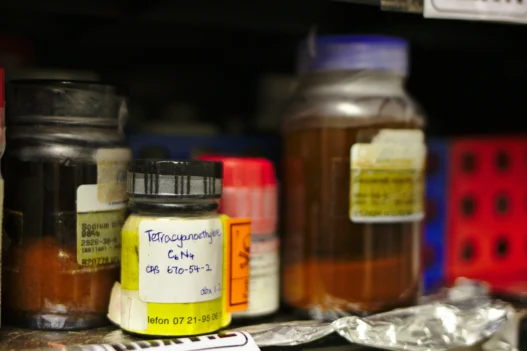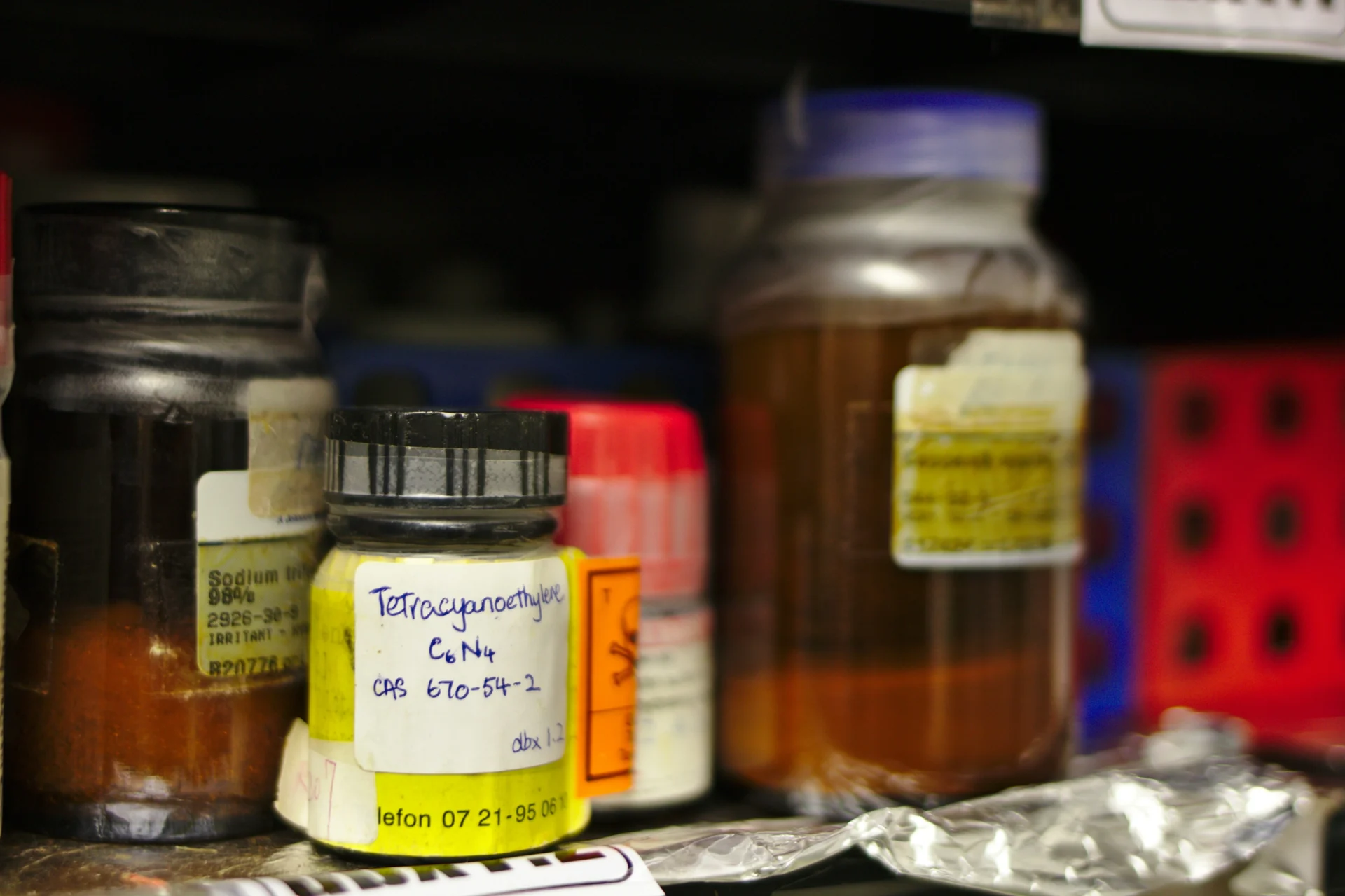Sulfisoxazole is a sulfonamide antibiotic commonly used to treat bacterial infections such as urinary tract infections and respiratory infections. Its relevance to everyday life lies in its ability to combat these common ailments and improve the health and well-being of individuals. By effectively targeting and eradicating bacterial infections, Sulfisoxazole plays a significant role in maintaining public health and reducing the spread of illness within communities. Its availability and efficacy make it a valuable tool in modern medicine for addressing common bacterial infections that individuals may encounter in their daily lives.
Table of Contents:
- 💡 Commercial Applications
- ⚗️ Chemical & Physical Properties
- 🏭 Production & Procurement
- ⚠️ Safety Considerations
- 🔬 Potential Research Directions
- 🧪 Related Compounds
💡 Commercial Applications
Sulfisoxazole, a sulfonamide antibiotic, is primarily utilized in the pharmaceutical industry for its antibacterial properties. It is commonly used in the treatment of various bacterial infections, such as urinary tract infections, bronchitis, and pneumonia.
In addition to its medicinal applications, Sulfisoxazole is used in certain commercial and industrial settings. It can be employed as a growth promoter in animal feeds to improve the health and growth of livestock. Furthermore, it is sometimes utilized in the preservation of certain cosmetics and personal care products.
As a medication, Sulfisoxazole works by inhibiting the growth of bacteria by interfering with the production of folic acid, which is essential for bacterial survival. It is typically administered orally in the form of tablets or liquid suspension. The dosage and duration of treatment vary depending on the specific condition being treated and the individual’s medical history.
Overall, Sulfisoxazole plays a vital role in both the pharmaceutical industry and clinical medicine. Its antimicrobial properties make it an effective treatment option for a variety of bacterial infections, contributing to improved patient outcomes and public health.
⚗️ Chemical & Physical Properties
Sulfisoxazole is a white crystalline powder with no distinctive odor. It is commonly used as an antibiotic medication to treat a variety of bacterial infections. The compound’s appearance and lack of odor make it easily distinguishable in a laboratory setting.
Sulfisoxazole has a molar mass of approximately 254.28 g/mol and a density of 1.47 g/cm³. Compared to common food items like salt (58.44 g/mol, 2.16 g/cm³) and sugar (342.30 g/mol, 1.59 g/cm³), Sulfisoxazole falls within a similar range in terms of both molar mass and density.
The melting point of Sulfisoxazole is around 176-180°C, while the boiling point is approximately 640°C. These values exceed those of common food items such as butter (melting point: 30-35°C, boiling point: 150-180°C) and sugar (melting point: 186°C, decomposition point: above 160°C), demonstrating the compound’s higher thermal stability.
Sulfisoxazole is sparingly soluble in water and has a relatively low viscosity in solution. Compared to common food items like salt (soluble in water, low viscosity) and sugar (highly soluble in water, low viscosity), Sulfisoxazole exhibits similar solubility behavior but with a slightly higher viscosity due to its chemical structure.
🏭 Production & Procurement
Sulfisoxazole is primarily produced using the diazotization reaction of sulphanilamide with sodium nitrite in acid medium, followed by coupling with 2-amino-4-methylpyrimidine. This process results in the formation of Sulfisoxazole, which is subsequently isolated and purified to obtain the final product.
Once Sulfisoxazole is synthesized, it can be procured either through pharmaceutical manufacturers or chemical suppliers. The compound is typically transported in bulk quantities in sealed containers to ensure its stability and purity during transit. Quality control measures are implemented throughout the procurement and transportation process to maintain the integrity of the product.
Pharmaceutical companies and healthcare providers often procure Sulfisoxazole in various forms, including tablets, capsules, and powder for oral suspension. The compound may also be incorporated into topical ointments or creams for external use. Proper storage conditions are essential to maintain the potency and efficacy of Sulfisoxazole until it is utilized for therapeutic purposes.
⚠️ Safety Considerations
Safety considerations for Sulfisoxazole must be taken into account due to its potential hazards. As with any antibiotic, there is a risk of allergic reactions, so individuals with a known allergy to sulfonamides should avoid using Sulfisoxazole. Additionally, it is important to be mindful of potential drug interactions, particularly with medications that may affect kidney function. Monitoring for signs of kidney damage, such as increased thirst or urination, is crucial while taking Sulfisoxazole.
Hazard statements for Sulfisoxazole include the risk of causing skin and eye irritation. It is important to avoid direct contact with the skin or eyes when handling this substance. Ingestion of Sulfisoxazole can lead to gastrointestinal irritation and should be avoided. In case of ingestion, it is recommended to seek medical attention immediately.
Precautionary statements for Sulfisoxazole emphasize the importance of wearing protective equipment, such as gloves and goggles, when handling the substance. It is crucial to work in a well-ventilated area to prevent inhalation of fumes. Proper disposal methods should be followed to prevent environmental contamination. Additionally, individuals with liver or kidney disease should consult with a healthcare provider before using Sulfisoxazole.
🔬 Potential Research Directions
Potential research directions for Sulfisoxazole include exploring its effectiveness against emerging antibiotic-resistant strains of bacteria. Additionally, investigating its potential use in combination therapy with other antibiotics to enhance efficacy and combat resistance mechanisms could be beneficial. Further studies could focus on determining the optimal dosage and administration route for maximum therapeutic outcome.
Investigating the pharmacokinetics and pharmacodynamics of Sulfisoxazole in different patient populations, such as pediatric or geriatric patients, could provide valuable insights into appropriate dosing regimens. Additionally, research on potential drug-drug interactions with commonly prescribed medications could help guide clinical decision-making in treatment. Exploring the mechanism of action of Sulfisoxazole at a molecular level could offer new perspectives on its antibacterial activity and aid in the development of novel antibiotics.
Studies evaluating the safety profile and potential adverse effects of Sulfisoxazole could contribute to a better understanding of its overall risk-benefit profile. Furthermore, research on the impact of Sulfisoxazole on the gut microbiota and the development of antibiotic-associated diarrhea could provide important information for patient care and antimicrobial stewardship. Investigating the long-term efficacy and sustainability of Sulfisoxazole in the treatment of chronic infections could offer insights into its clinical utility and potential limitations.
🧪 Related Compounds
One similar compound to Sulfisoxazole based upon molecular structure is Sulfamethoxazole. This compound is also a sulfonamide antibiotic that works by inhibiting the synthesis of dihydrofolic acid in bacteria. Sulfamethoxazole is commonly used in combination with trimethoprim to treat a variety of bacterial infections.
Another compound with a molecular structure similar to Sulfisoxazole is Sulfadiazine. Like Sulfisoxazole, Sulfadiazine is a sulfonamide antibiotic that interferes with the synthesis of folic acid in bacteria. Sulfadiazine is often used in the treatment of urinary tract infections and toxoplasmosis.
Trimethoprim is another compound that shares similarities with Sulfisoxazole in terms of molecular structure. Trimethoprim works by inhibiting the enzyme dihydrofolate reductase, which is involved in the synthesis of tetrahydrofolic acid. When combined with sulfamethoxazole, trimethoprim is an effective treatment for various bacterial infections.






